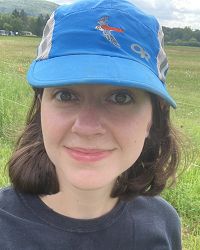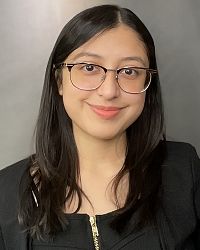The SIPS Diversity and Inclusion Council is open to anyone in the SIPS community who would like to participate in building a diverse, equitable, and inclusive community in our school. New voices, viewpoints and energy are always welcome. Read more about the efforts of our working groups. Questions? Email: sips-dicouncil@cornell.edu.
March is Women’s History Month
The American Society of Agronomy is celebrating Women in Science this month with these member spotlights, including a profile of Cornell Soil Health Lab manager Kirsten Kurtz.
Some Cornell resources:
- Women’s History Month: Images from an immigrant woman’s life in the early 1900s from Cornell University Press
- Celebrating Women’s History Month with the College of Veterinary Medicine
- Learn more about the Women’s Resource Center on the Ithaca campus
Also this month
- Neurodiversity Celebration Week (March 13-19). When it comes to inclusion, neurodiversity refers to a world where neurological differences are recognized and respected as all other human variations. Learn more below. Cornell Neurodiversity Celebration Week events.
- Transgender Day of Visibility (March 31). Consider supporting LGBT Studies at Cornell on Giving Day (March 16) or exploring the Cornell University LGBTQ+ Faculty and Staff Resource Guide.
- César Chávez Day (March 31). Learn more about the Cornell Farmworker Program, which seeks recognition for farmworkers’ contributions to society and their acceptance and full participation in local communities. Aquí se puede encontrar el sitio web y recursos en Español.
Celebrating Neurodiversity
From the Cornell AgriTech DEI Bulletin by Amara Dunn and Anna Katharine Mansfield:
Human beings engage with the world around us in a variety of ways, including how we think, communicate with each other, interact with each other, and take in information. The terms neurodivergent and neurodiverse are often used to describe people who engage with the world in ways that differ from those used by the dominant or majority culture, including people with ADHD, autism, or dyslexia. However, approaching the world differently is not a weakness or a disorder.
Neurodiversity recognizes that human brains all work differently, and emphasizes celebrating those differences, rather than describing some people as normal and others as abnormal. All ways of engaging the world – neurodivergent and neurotypical – come with both strengths and challenges. We all have superpowers. The norms around how we recruit, hire, and train employees can present barriers to neurodivergent people, but some companies are modifying their policies and practices to be more inclusive.
During Neurodiversity Celebration Week (March 13-19 this year), spend time learning about diverse ways of being and interacting with the world. Celebrate the unique strengths and talents of neurodiverse people and learn how to create more inclusive spaces where everyone belongs and can thrive.
Ways to celebrate neurodiversity:
Be curious. Read more about neurodiversity, including answers to some common questions. Learn about specific types of neurological differences and neurodiversity in the workplace. This short video offers a simple explanation of autism, which might be very informative for non-autistic young people in your life. This video (again, focused on autism, but with broader implications) describes the empathy gap that can exist when two people engage with the world in different ways.
You are not alone! The Learning Strategies Center at Cornell supports neurodivergent students. This year, they are offering a variety of activities (in Ithaca and on Zoom) for Neurodiversity Celebration Week. Some events are designed for people who identify as neurodivergent, while others can help us be more inclusive of neurodivergent colleagues or students. If you are a Cornell employee who identifies as neurodivergent, did you know that there is a Neurodivergent Employee Community at Cornell? They have a listserv and meet on Zoom every other week.
Support success for everyone. Do you know what helps your co-workers or supervisees be successful? Have you asked? It might be different from what helps you succeed. Simple things like offering a quiet space or noise-cancelling headphones can make a big difference.
At AgriTech, we grow things. We grow better things when we embrace the diverse ways we learn about the world around us and solve problems.


 Flower strips increase agroecosystem biodiversity at multiple trophic levels. This practice does not require major agroecosystem redesign or yield losses, so theoretically it is available to many growers. However, despite established literature on flower strips and subsidies available in the United States and Europe, this practice is not widely adopted. Westbrook’s research seeks to identify flower strip systems that are both effective and more accessible than standard systems. The work will focus on preserving growers’ management flexibility by requiring only a single year’s commitment and avoiding in-season field operations. It also will explore how delayed planting and landscape context modify the effects of flower strips. These findings will enable Northeastern growers to make accurate, site-specific predictions about the costs and benefits of flower strips.
Flower strips increase agroecosystem biodiversity at multiple trophic levels. This practice does not require major agroecosystem redesign or yield losses, so theoretically it is available to many growers. However, despite established literature on flower strips and subsidies available in the United States and Europe, this practice is not widely adopted. Westbrook’s research seeks to identify flower strip systems that are both effective and more accessible than standard systems. The work will focus on preserving growers’ management flexibility by requiring only a single year’s commitment and avoiding in-season field operations. It also will explore how delayed planting and landscape context modify the effects of flower strips. These findings will enable Northeastern growers to make accurate, site-specific predictions about the costs and benefits of flower strips. Chandel is a soil and crop sciences Ph.D. student in the Luo lab at Cornell University whose research focuses on improving the model representation of plant-mediated water distribution between soil layers as a control on the functions of dryland ecosystems. Drylands cover more than 40% of the land surface and play a dominant role in global carbon sequestration. The current Earth system models are unable to simulate dryland ecosystem function, partly due to a poor representation of plant-available water dynamics. Chandel aims to utilize long-term observational data collected in AmeriFlux core sites in dominant dryland woody biomes in the Southwestern U.S. and employ the data assimilation approach to develop a robust dryland ecosystem model.
Chandel is a soil and crop sciences Ph.D. student in the Luo lab at Cornell University whose research focuses on improving the model representation of plant-mediated water distribution between soil layers as a control on the functions of dryland ecosystems. Drylands cover more than 40% of the land surface and play a dominant role in global carbon sequestration. The current Earth system models are unable to simulate dryland ecosystem function, partly due to a poor representation of plant-available water dynamics. Chandel aims to utilize long-term observational data collected in AmeriFlux core sites in dominant dryland woody biomes in the Southwestern U.S. and employ the data assimilation approach to develop a robust dryland ecosystem model. Enhanced rock weathering (ERW) is a carbon dioxide removal strategy that amends soils with crushed magnesium and calcium silicate rock to accelerate carbon capture in soils. The effect of ERW on soil organic matter has received little attention, but past literature in organo-mineral associations suggests potential for organic carbon accrual. Through experiments, Rivera will learn the basic mechanisms by which magnesium and calcium silicate minerals extracted from ERW influence soil organic matter persistence. The findings will contribute to a holistic understanding of ERW as a carbon dioxide removal strategy, improve model predictions for ERW, and contribute to IPCC’s knowledge for enhanced weathering, a strategy now necessary for mitigating anthropogenic climate change.
Enhanced rock weathering (ERW) is a carbon dioxide removal strategy that amends soils with crushed magnesium and calcium silicate rock to accelerate carbon capture in soils. The effect of ERW on soil organic matter has received little attention, but past literature in organo-mineral associations suggests potential for organic carbon accrual. Through experiments, Rivera will learn the basic mechanisms by which magnesium and calcium silicate minerals extracted from ERW influence soil organic matter persistence. The findings will contribute to a holistic understanding of ERW as a carbon dioxide removal strategy, improve model predictions for ERW, and contribute to IPCC’s knowledge for enhanced weathering, a strategy now necessary for mitigating anthropogenic climate change.
